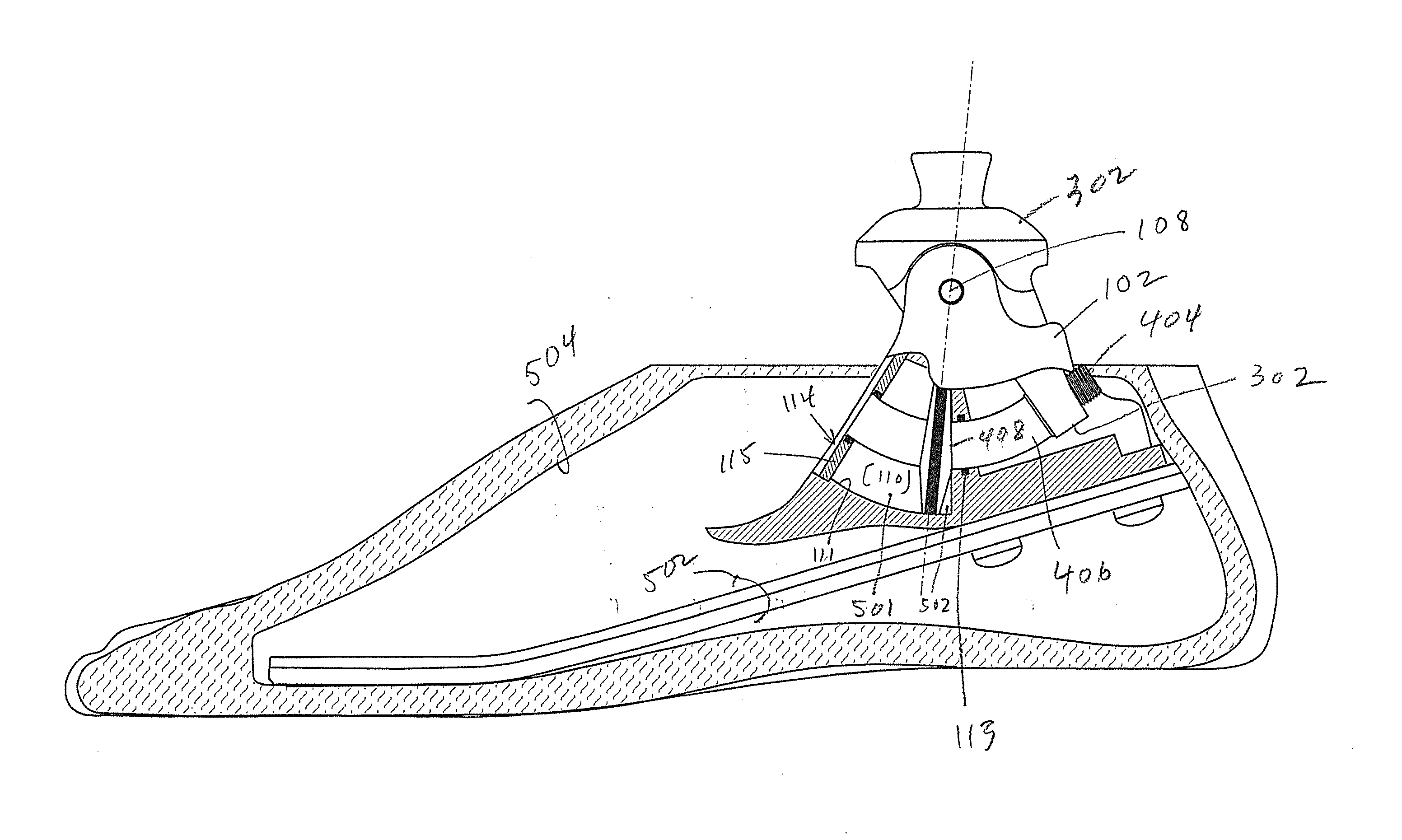Prosthetics using curved dampening cylinders
a dampening cylinder and cylinder technology, applied in the field of prosthetics, can solve the problems of changing the “effective heel height”, the slope of the terrain, and the steep inclines, and achieve the effect of reducing the component count and wear
- Summary
- Abstract
- Description
- Claims
- Application Information
AI Technical Summary
Benefits of technology
Problems solved by technology
Method used
Image
Examples
Embodiment Construction
[0028]This invention resides in prosthetic joint and limb components that utilize a single, curved dampening cylinder to reduce component count and wear. In contrast to devices that rely on linear cylinders, the invention requires only one pivoting axis without the need for link members that rotate about additional axes. Such link members not only increase part count, the movement and potential play of the additional moving parts may result in added expense and increased wear.
[0029]In an embodiment associated with a prosthetic foot / ankle requires only three major components: a housing, an ankle component, and a piston component. These major components are in addition to a few minor components and the foot blade to which the housing attaches and the plyon to which the ankle component attaches. Foot blades and pylons are well known to those of skill in the art, and the invention is not limited in terms of which foot blades, pylons, or associated coupling mechanisms are used.
[0030]FIGS...
PUM
 Login to View More
Login to View More Abstract
Description
Claims
Application Information
 Login to View More
Login to View More - R&D
- Intellectual Property
- Life Sciences
- Materials
- Tech Scout
- Unparalleled Data Quality
- Higher Quality Content
- 60% Fewer Hallucinations
Browse by: Latest US Patents, China's latest patents, Technical Efficacy Thesaurus, Application Domain, Technology Topic, Popular Technical Reports.
© 2025 PatSnap. All rights reserved.Legal|Privacy policy|Modern Slavery Act Transparency Statement|Sitemap|About US| Contact US: help@patsnap.com



